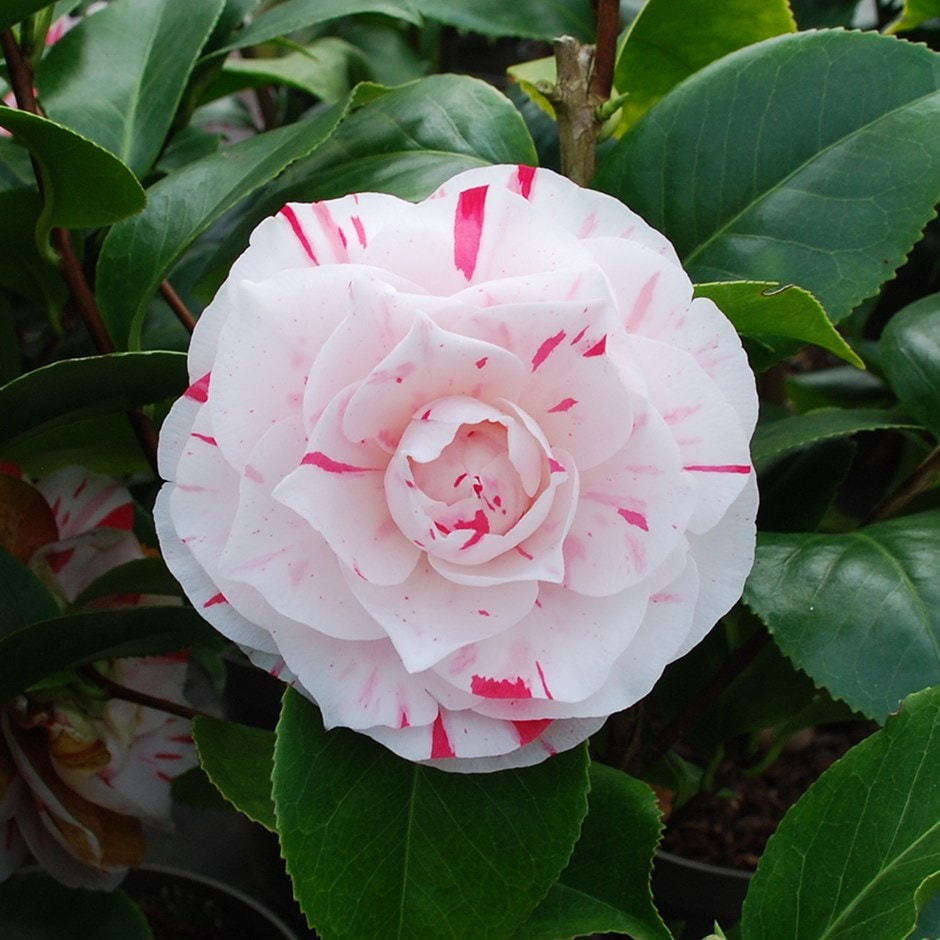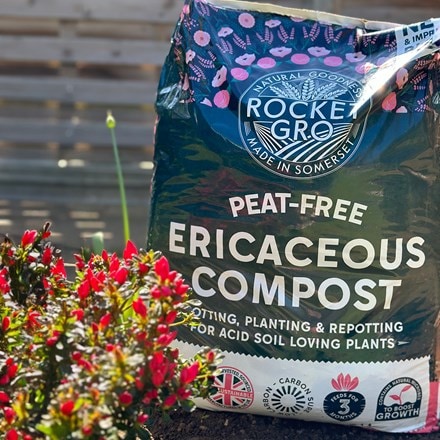Camellia × williamsii 'Lavinia Maggi'
camellia 'Lavinia Maggi' ( syn. Camellia japonica 'Contessa Lavinia Maggi' )
Eventual height & spread
Camellia × williamsii 'Lavinia Maggi'
camellia 'Lavinia Maggi' ( syn. Camellia japonica 'Contessa Lavinia Maggi' )
- 2 litre pot
- £24.99
- available to order from autumn
Delivery options
- Standard £5.99
- Position: partial shade (but not east-facing)
- Soil: moist but well-drained, humus-rich, acid soil (or ericaceous compost for container-grown specimens)
- Rate of growth: average
- Flowering period: March to May
- Hardiness: fully hardy
A mid-sized evergreen shrub prized for its unique striped formal double blooms,Camellia × williamsii 'Lavinia Maggi' bears elegant 12cm (7in) wide flowers featuring overlapping pure white petals irregularly streaked and flecked with cerise pink. Occasionally solid white or pink blooms are also produced, adding to its charming unpredicatbility. Upright in habit, if you're looking for late winter and early spring insterest, this camellia provides lustrous foliage and an intriguing interplay of colour and form to brighten acid soil borders in partial shade.
Plant spring-flowering camellias in acidic, humus-rich, moisture-retentive soil with good drainage. Choose a sheltered spot in partial shade, ideally out of cold, drying winds and away from early morning sun, which can scorch flower buds.
Container-grown plants should be potted into ericaceous compost and kept well-watered, especially in dry spells, to prevent bud drop. Ensure good drainage in the pots to avoid waterlogging. Avoid allowing them to dry out in late summer, as this is when flower buds are forming for the following year.
Feed established plants with a balanced liquid (and preferably ericaceous) fertiliser in mid-spring and again in June. Apply an annual top-dressing of leaf mould or shredded bark to help retain moisture and maintain soil acidity. Pruning is generally minimal — after flowering, trim lightly to remove any dead or straggly growth and to maintain a neat shape.
For container plants, insulate pots in winter with bubble wrap or hessian to protect roots from freezing temperatures.
Container-grown plants should be potted into ericaceous compost and kept well-watered, especially in dry spells, to prevent bud drop. Ensure good drainage in the pots to avoid waterlogging. Avoid allowing them to dry out in late summer, as this is when flower buds are forming for the following year.
Feed established plants with a balanced liquid (and preferably ericaceous) fertiliser in mid-spring and again in June. Apply an annual top-dressing of leaf mould or shredded bark to help retain moisture and maintain soil acidity. Pruning is generally minimal — after flowering, trim lightly to remove any dead or straggly growth and to maintain a neat shape.
For container plants, insulate pots in winter with bubble wrap or hessian to protect roots from freezing temperatures.

